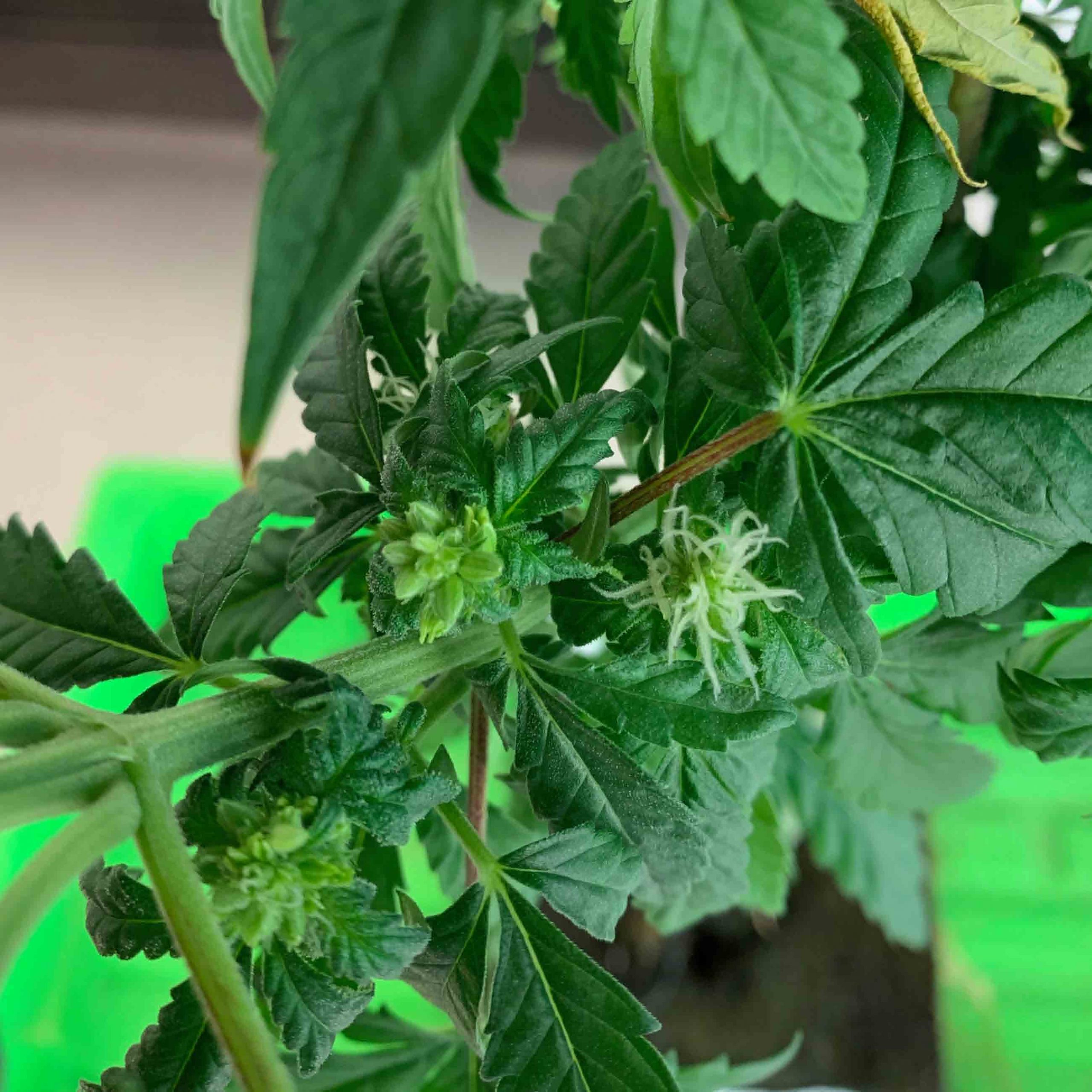Description: Pictured here is an interesting phenomenon occuring in Cannabis sativa: a female plant has been coerced into developing a male flower. Unlike most in the plant kingdom, Cannabis sativa is known as a ‘dioecious’ species – it has distinct male and female individuals. The Cannabis industry only wants to harvest unfertilized female flowers because they produce high levels of the commercially important chemicals, THC and CBD. But, if a male flower is present, it will fertilize all the female flowers, rendering them useless. However, it’s not quite as simple as removing the male plants from a crop to prevent yield loss. It turns out female plants are capable of producing male flowers too! This photo captures a female plant after it was partially sprayed with a hormone inhibitor, resulting in the development of both male and female flowers. If we can uncover the mechanisms governing these seemingly fluid sex determination patterns, we can develop diagnostic kits to test for male flower-producing plants, and eventually breed for plants which will only produce female flowers. This research will help the Cannabis industry progress towards more predictable and reliable cultivation and breeding practices, which will ultimately increase yield and efficiency.
Why did you conduct this research? Because Cannabis has been an illicit substance for so long, there has been minimal research conducted on the plant itself. The goal in the Cannabis industry is to develop true-breeding strains with specific traits, but fundamental research on the plant’s behaviour on both a phenotypic and molecular level is needed first. With this research, we hope to uncover the genetic mechanisms governing sex determination in Cannabis. Since it is impossible to differentiate male and female plants before they flower, it is important to understand how to genetically identify male flower-producing plants early in order to minimize yield loss.
Technique: This is an unmodified photograph of a female Cannabis sativa plant that had been partially sprayed with STS (silver thiosulfate), an inhibitor of the plant hormone ethylene. STS treatment of female Cannabis plants is known to result in the development of male flowers, but the process governing this switch is still unknown. RNA from both treated (male) and untreated (female) flowers from the same plant was extracted and sequenced to produce a set of genes with different expression patterns. With this dataset, hypotheses can be made about the genetic pathways potentially underlying sex determination mechanisms in Cannabis.
Acknowledgements: This research has been conducted in partnership with Metasys Genomics, funded through the Mitacs Accelerate program.

